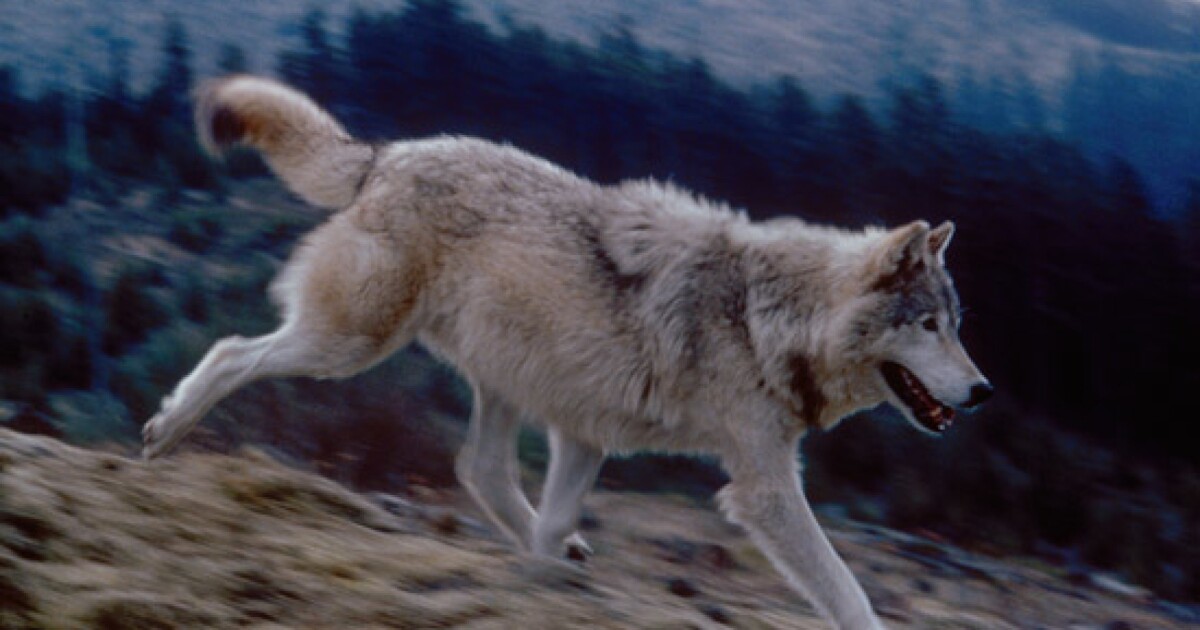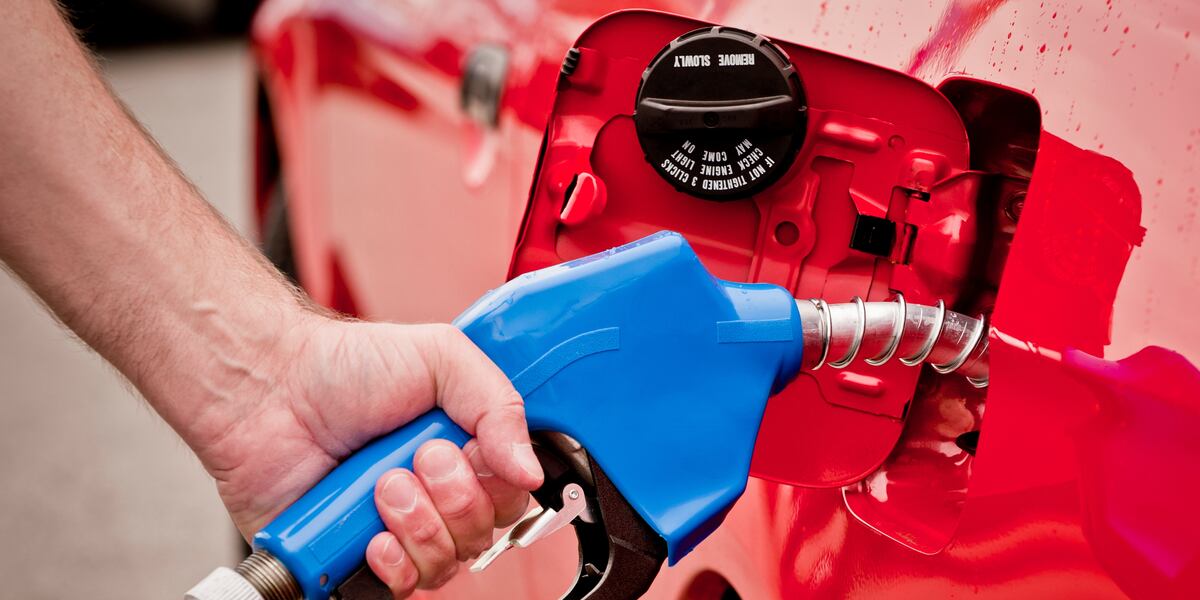Idaho
New genetics model to estimate wolf numbers in Idaho, shows 13% population decline

The Idaho Department of Fish and Game is rolling out a new way to estimate the number of wolves in the state using a genetics-based statistical model.
The Department estimates there were 1,150 wolves in the state in the summer of 2023, or a 13% decline in population from the previous year.
Wildlife Bureau Chief Shane Roberts explained the model starts by calculating the age of harvested wolves.
“There’s a certain tooth that we can pull, and that tooth we send to a lab in Montana that does a cross section of it and dyes it and counts it kind of like a tree ring,” he said. “At the same time, from that same tooth, we can wash it and get the DNA off so all in one sample, a tiny little tooth, we get both the age and the genetic information.”
The DNA samples establish relationships between wolves and are used to estimate reproduction rates.
“The new genetic based method relies on a data source that we’ve been collecting for years, so we can actually go back in time and produce estimates for prior years with the new method,” Roberts said.
In prior years, the department used cameras to estimate wolf density, but according to Roberts, that technique is likely to become obsolete.
”If there’s fewer wolves, we’ll likely get fewer pictures,” he said. “Modeling suggests that as that number declines, that method is probably going to become less reliable. That’s why we started down the path of finding this alternative method that’s genetic based, that does not require us to get pictures of wolves.”
This new genetics method uses a statistical approach similar to one developed in Sweden and Norway, but Idaho is the first state in the U.S. to develop its own model.
The Western Watersheds Project conservation group said it was still reviewing the methodology but Director Greg LeDonne said wolf numbers from Idaho Fish and Game should be taken with caution.
“Past experience with IDF population estimates gives us reason to believe that the new estimate is also flawed, and does not accurately count the state’s wolf population, and in fact, would overstate the actual population of wolves in Idaho,” he said.
These latest numbers are on track with the Department’s controversial 2023 plan to reduce the number of wolves in the state to 500.
“One thing that we need to keep in mind when reviewing any data or other information coming from Idaho Fish and Game concerning wolves is that we are dealing with a state government and a wolf management plan that are dedicated to driving the wolf population down to a level that would once again threaten to extirpate wolves in Idaho,” LeDonne said. “The state government has demonstrated its preference for lethal control of wolves over other non-lethal and more effective methods.”
In the past 12 months, 420 wolves were killed in Idaho, mostly by hunters and trappers.

Idaho
A 5% raise could be coming to most Idaho state workers

Most Idaho state employees could see about a 5% raise come July in a recommendation approved by a legislative committee Thursday.
Specifically, the proposal calls for a $1.55 hourly pay bump. That works out to at least a 5% raise for those earning less than $64,500 annually.
Democrats on the Change in Employee Compensation Committee, like Sen. Janie Ward-Engelking (D-Boise), voted against the measure, saying it didn’t go far enough – especially for higher paid workers.
“I’m worried that they’re not even going to keep up with the cost of living and that’s really a problem for me,” Ward-Engelking said.
After experiencing some of the highest rates of inflation in the country in 2022, prices in the Mountain region rose just 1.7% from November 2023 to November 2024.
The latest data from an Idaho Department of Human Resources labor market study show state workers here, on average, earn 15.1% less than the median wage of public and private sector employees in the region.
That’s also factoring in healthcare and retirement benefits, which are more generous than the private sector.
Base salaries across Idaho state workers are 25.1% below average compared to the median regional public and private sector employees.
The CEC Committee approved an 8% pay raise for Idaho State Police troopers to help retain and recruit more officers.
“It takes years of training and expense to produce a trooper with the experience to handle all the things that a trooper has to handle and this has become, in my opinion, a public safety issue,” said Sen. Dan Foreman (R-Viola).
Nurses and healthcare staff would get a 3% raise under the plan, with IT workers earning up to 4.5% pay hikes.
The Joint Finance and Appropriations Committee will consider the recommendation before finalizing a bill.
Copyright 2025 Boise State Public Radio
Idaho
After receiving support during Idaho's wildfire seasons, our firefighters are headed to California • Idaho Capital Sun

Idaho firefighters are making their way to assist and protect communities threatened by wildfires burning in the greater Los Angeles area in southern California.
More than 100,000 people have been evacuated from their homes, and at least five fires are burning covering more than 45 square miles there, according to NBC News.
The state of Idaho is mobilizing five task forces in a response to a request from the California Governor’s Office of Emergency Services through the Emergency Management Assistance Compact, according to a press release from the Idaho Office of Emergency Management.
“The Idaho Office of Emergency Management and the Idaho Fire Chiefs Association have coordinated efforts to evaluate available resources across the state,” and ” stand ready to provide additional assistance as needed,” the press release said.
As of Wednesday evening, 104 firefighters and 25 fire engines from Idaho were preparing to deploy this morning to support California’s response efforts, and the task forces are set to arrive in southern California on Friday, the press release stated. The task forces were mobilized from fire agencies throughout the state, including personnel from the city of Emmett and Kootenai County, as well as the Idaho National Laboratory in southern Idaho.
“Emergencies like these remind us of the critical importance of teamwork and mutual aid,” said Idaho Fire Chiefs Association President Kirk Carpenter in the release. “Idaho firefighters are prepared to join the fight in California, standing shoulder to shoulder with our partners to protect communities in harm’s way.”
The assistance compact has been invaluable to states facing wildfire, “ensuring that states can rely on each other during crises,” said Idaho Office of Emergency Management Director Brad Richy said in the release.
“After receiving support during our own wildfire seasons, Idaho is proud to return the favor by providing resources and personnel to help protect California’s communities,” he said.
The Emergency Management Assistance Compact was ratified by the U.S. Congress (Public Law 104-321) in 1996 and applies to all 50 states, the District of Columbia, Puerto Rico, Guam, the U.S. Virgin Islands, and the Northern Mariana Islands. The compact’s members can share personnel and resources from all disciplines, protect personnel who deploy to emergencies and be reimbursed for mission-related costs, according to the compact’s website.
“The EMAC is a vital interstate compact that provides a proven mutual aid framework allowing states to share resources during times of disaster or emergency,” the release stated. “All costs associated with deploying resources under EMAC are paid for by the requesting state.”
YOU MAKE OUR WORK POSSIBLE.
Idaho
Idaho mobilizes 100+ firefighters to help battle blazes in Los Angeles

BOISE, Idaho — In response to the devastating wildfires currently sweeping across Los Angeles County, Idaho will send five task forces to help protect communities threatened by the ongoing fires.
Sand Hollow Fire Protection District preparing to deploy to SoCal fires
The move comes in response to a request from the California Governor’s Office of Emergency Services. In total, Idaho will send 104 firefighters and 25 fire engines to the Los Angeles area on Thursday morning. The task forces, which were coordinated by the Idaho Office of Emergency Management and the Idaho Fire Chiefs Association, hope to be in place on Friday.
IFCA president, Kirk Carpenter says the task forces are ready to “stand shoulder to shoulder with our partners to protect communities in harm’s way.”
As of this writing, 5 people have perished in the various fires ravaging Los Angeles County and 100,000 have been evacuated from their homes.
-

 Business1 week ago
Business1 week agoThese are the top 7 issues facing the struggling restaurant industry in 2025
-

 Culture1 week ago
Culture1 week agoThe 25 worst losses in college football history, including Baylor’s 2024 entry at Colorado
-

 Sports1 week ago
Sports1 week agoThe top out-of-contract players available as free transfers: Kimmich, De Bruyne, Van Dijk…
-

 Politics1 week ago
Politics1 week agoNew Orleans attacker had 'remote detonator' for explosives in French Quarter, Biden says
-

 Politics7 days ago
Politics7 days agoCarter's judicial picks reshaped the federal bench across the country
-

 Politics5 days ago
Politics5 days agoWho Are the Recipients of the Presidential Medal of Freedom?
-

 Health4 days ago
Health4 days agoOzempic ‘microdosing’ is the new weight-loss trend: Should you try it?
-

 World1 week ago
World1 week agoIvory Coast says French troops to leave country after decades















